Dartboards
The dartboard probably developed from the archery target to which more segments and rings were added.
At the beginning dartboards were made from soft wood like elm or poplar which were easy to cut and shape and in which the darts really stick firm.
How many segments the board had, how the numbers were arranged and which numbers were used, whether they show off double or triple rings for a
long time in Great Britain differed regionally.
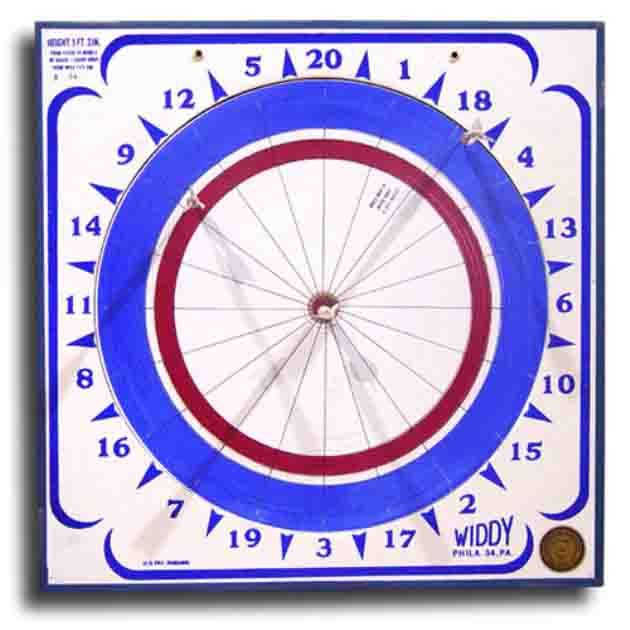
One of this "local varieties" seems to have found its way to America where it is used till today to play "American Darts".
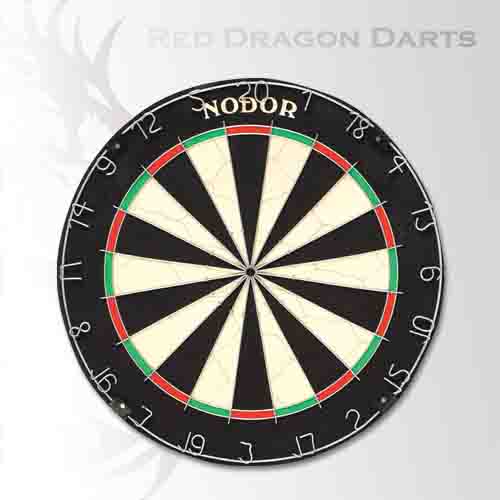
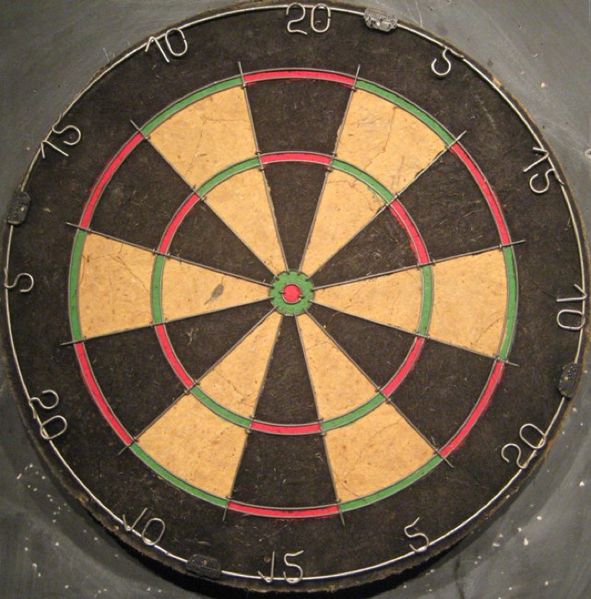
Other regional boards were the Five's Boards (London Five, Ipswich Five), which used onbly five different numbers, the Double Boards, which only had a double ring -on the picture you can see a Yorkshire board - and the Manchester Board.
At the beginning boards were painted black and segments and numbers were painted on it in white . Later one used white painted wires to divide the board and for the numbers and the wire pieces developed into the "spider" in one piece. The wooden dartboards had to be soaked over night, so that the small wholes the darts left in the wood could close again.
The numbering of the segments we use today was an idea a carpenter named Gamlin had in 1896. It was supposed to punish inaccuracy. One can say that the arrangement has some flaws and quite a lot of mathematical research was already done to find the optimal dartboard.
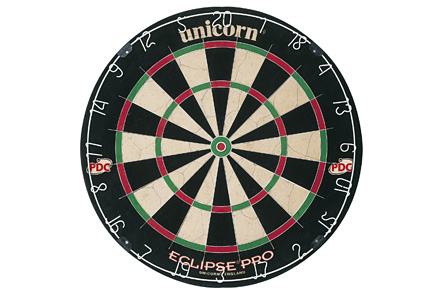
1920 in England a standardized board was introduced the so called "London" or "Clock" dartboard with the numbering after Gamlin. But at first it didn't win through especially not against the local boards. The sport of darts at that time was very popular in Great Britain.
The company Nodor experimented with a new plasticine and the inventor of the material, Ted Leggatt, thought one could use it for dartboards as well. This board which came to the market in 1923 was never really liked as the familiar "plonk" sound when the dart hit the board was missed by the players. So Nodor expanded the range to elm-boards as well.
In 1931 a pub owner approached Leggatt with a new idea - why not use short pieces of rope bound together to a circular form for a dartboard. This idea was used and refined and in 1935 the first ever "Bristle-Dartboard" came to the market. Now instead of rope small biscuits of sisal were put together, pressed into form and divided by wires into segments. Those boards had several advantages over the wooden boards. One didn't have to soak them over night, the boards were more durable and the sisal closed again after the darts were pulled out. But those boards were much more expensive then the wooden ones and it took till after 1970 when the elm disease had almost wiped out the elms in Great Britain before the Bristle Board became the board to dominate the dart scene.
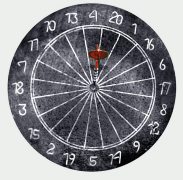
The wooden boards can still be found regionally. The Manchester Board still is produced by Chris and David Mealeay and used in local leagues.
The Yorkshire Board and the Ipswich Five are now sold as Bristle Boards by Winmau - the manufacturer merged some years ago with Nodor. Sometimes one can find cheap paper boards on the market.
The sisal used for the dart boards differs depending on the country it comes from. Most sisal today comes from East Africa, Brazil and China. Sisal from East Africa is the best quality available.
The spider developed over the years. At the beginning it was no spider at all but separate pieces of wire, it developed into the spider which is in one piece. At the beginning the spider wires were comparatively thick and jutted out of the sisal building staples. Now-a-days the wires are getting thinner and thinner and most are sunken into the sisal.
Today one can find beside the standardized bristle dart board boards with smaller double and triple rings - the Champion Boards.
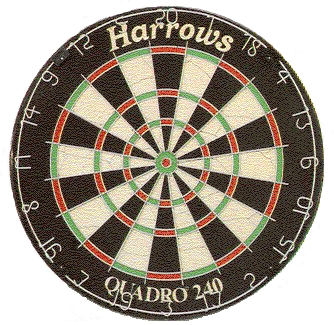
A short time one could buy a quadroboard which had a quadro ring counting fourth the numbers as well but it has disappeared again.
Besides this there exist boards with rules basing on other sports for example golf dartboards.
For the WDF/BDO and PDC tournaments only standardized bristle dart boards with Gamlins numbering are used today.
David Percy's optimal dartboard

One of this "local varieties" seems to have found its way to America where it is used till today to play "American Darts".


Other regional boards were the Five's Boards (London Five, Ipswich Five), which used onbly five different numbers, the Double Boards, which only had a double ring -on the picture you can see a Yorkshire board - and the Manchester Board.
At the beginning boards were painted black and segments and numbers were painted on it in white . Later one used white painted wires to divide the board and for the numbers and the wire pieces developed into the "spider" in one piece. The wooden dartboards had to be soaked over night, so that the small wholes the darts left in the wood could close again.
The numbering of the segments we use today was an idea a carpenter named Gamlin had in 1896. It was supposed to punish inaccuracy. One can say that the arrangement has some flaws and quite a lot of mathematical research was already done to find the optimal dartboard.

1920 in England a standardized board was introduced the so called "London" or "Clock" dartboard with the numbering after Gamlin. But at first it didn't win through especially not against the local boards. The sport of darts at that time was very popular in Great Britain.
The company Nodor experimented with a new plasticine and the inventor of the material, Ted Leggatt, thought one could use it for dartboards as well. This board which came to the market in 1923 was never really liked as the familiar "plonk" sound when the dart hit the board was missed by the players. So Nodor expanded the range to elm-boards as well.
In 1931 a pub owner approached Leggatt with a new idea - why not use short pieces of rope bound together to a circular form for a dartboard. This idea was used and refined and in 1935 the first ever "Bristle-Dartboard" came to the market. Now instead of rope small biscuits of sisal were put together, pressed into form and divided by wires into segments. Those boards had several advantages over the wooden boards. One didn't have to soak them over night, the boards were more durable and the sisal closed again after the darts were pulled out. But those boards were much more expensive then the wooden ones and it took till after 1970 when the elm disease had almost wiped out the elms in Great Britain before the Bristle Board became the board to dominate the dart scene.

The wooden boards can still be found regionally. The Manchester Board still is produced by Chris and David Mealeay and used in local leagues.
The Yorkshire Board and the Ipswich Five are now sold as Bristle Boards by Winmau - the manufacturer merged some years ago with Nodor. Sometimes one can find cheap paper boards on the market.
The sisal used for the dart boards differs depending on the country it comes from. Most sisal today comes from East Africa, Brazil and China. Sisal from East Africa is the best quality available.
The spider developed over the years. At the beginning it was no spider at all but separate pieces of wire, it developed into the spider which is in one piece. At the beginning the spider wires were comparatively thick and jutted out of the sisal building staples. Now-a-days the wires are getting thinner and thinner and most are sunken into the sisal.
Today one can find beside the standardized bristle dart board boards with smaller double and triple rings - the Champion Boards.

A short time one could buy a quadroboard which had a quadro ring counting fourth the numbers as well but it has disappeared again.
Besides this there exist boards with rules basing on other sports for example golf dartboards.
For the WDF/BDO and PDC tournaments only standardized bristle dart boards with Gamlins numbering are used today.
David Percy's optimal dartboard